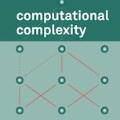Because physics-based building models are difficult to obtain as each building is individual, there is an increasing interest in generating models suitable for building MPC directly from measurement data. Machine learning methods have been widely applied to this problem and validated mostly in simulation; there are, however, few studies on a direct comparison of different models or validation in real buildings to be found in the literature. Methods that are indeed validated in application often lead to computationally complex non-convex optimization problems. Here we compare physics-informed Autoregressive-Moving-Average with Exogenous Inputs (ARMAX) models to Machine Learning models based on Random Forests and Input Convex Neural Networks and the resulting convex MPC schemes in experiments on a practical building application with the goal of minimizing energy consumption while maintaining occupant comfort, and in a numerical case study. We demonstrate that Predictive Control in general leads to savings between 26% and 49% of heating and cooling energy, compared to the building's baseline hysteresis controller. Moreover, we show that all model types lead to satisfactory control performance in terms of constraint satisfaction and energy reduction. However, we also see that the physics-informed ARMAX models have a lower computational burden, and a superior sample efficiency compared to the Machine Learning based models. Moreover, even if abundant training data is available, the ARMAX models have a significantly lower prediction error than the Machine Learning models, which indicates that the encoded physics-based prior of the former cannot independently be found by the latter.
翻译:由于物理建筑模型很难获得,因为每个建筑都是个建筑,因此很难获得物理建筑模型,人们越来越有兴趣制作适合直接从测量数据中建立MPC的模型。机械学习方法已广泛应用于这一问题,并大多在模拟中得到验证;然而,关于直接比较不同模型或实际建筑验证的研究很少,文献中将发现实际建筑中不同模型的直接比较或实际建筑的验证。在应用中确实经过验证的方法往往导致计算复杂的非电解吸附优化问题。我们在这里将物理知情的自动递增-动态-与外源输入(ARMAX)模型与机械学习模型(ARMAX)模型进行比较,根据随机森林和输入凝聚神经网络的机器学习模型,以及由此产生的在实际建设应用实验中将电耗降到最低,同时保持食用舒适度,并在数字案例研究中发现,总体预测能节省26%至49 %的热和冷却能源。此外,我们发现所有模型都会导致在制约性和能量减少方面达到令人满意的控制性性表现,即使独立地实现了节制的神经网络网络网络网络网络,因此,在实际建设应用应用中,在尽量减少能源消耗消耗消耗消耗量的模型中,我们还看到一个可靠的前的模型能够进行精确分析。此外,我们还看到,一个基础分析模型的精确的模型是用来测量分析,一个基础的模型,一个基础的精确的模型是用来分析。





